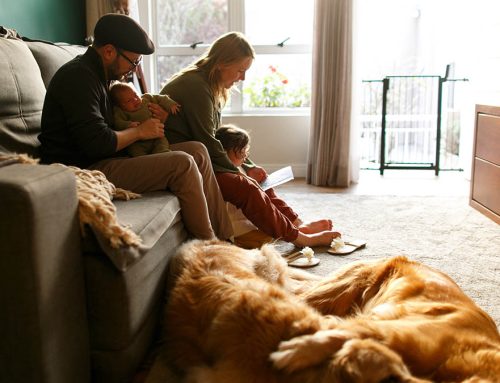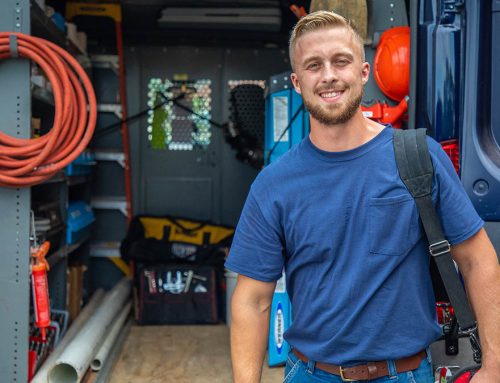Pros and Cons of a Whole Home Humidifier

We spend the majority of our time indoor, so having optimal indoor humidity level and quality air is essential for our wellbeing.
High humidity levels can have the negative impact on not just the energy bills, but, more importantly, also on family health, as well as the overall health of your home.
Humidity impacts our health and directly affects how comfortable we feel. Ideally, your home’s humidity level should be maintained between 30% and 50%, and an easy solution is to have a humidifier. You can choose a humidifier for just one room, or a whole house humidifier that will take care of your entire home.
Here are pros and cons of having a whole home humidifier:
Pros:
Automatic Humidity Control
One of the biggest benefits of whole house humidifiers is that they automatically control indoor humidity and keep it at a comfortable level.
Whole home humidifiers have humidistats that enable you to set the desired humidity in your home. The central home humidifier will pump out moisture until it reaches the set level of relative humidity.
According to Stanford, when indoor humidity rises above 50%, there is an increased likelihood of mold and bacterial growth – something that you don’t need to worry about with the automatic control of a whole house humidifier.
Optimal Moisture Levels
Dry air can be a major issue, but too much moisture also raises concerns – whole house humidifiers work with your HVAC system to provide consistent and optimal moisture levels in every room of your home.
No Water/Moisture Damage
If you have a portable humidifier, you may place it in a room, crank it up, and forget about it, which can be risky, as the excess moisture can cause damage to your walls and furnishings; there’s even potential concern over mold growth.
No Need For Refills
Linked directly to your plumbing, the whole home humidifier does not need to be refilled with water to add moisture to your air – your humidity levels will be automatically adjusted.
Quiet and Invisible
A whole house system is hidden away and also very quiet, unlike their portable humidifier counterparts.
Added Value
When you install a whole house humidifier, you are actually adding value to your home. It’s an upgrade that increases the marketability of your home.
Low Maintenance
The maintenance of HVAC inline whole home humidifiers is almost non-existent, except for a once a year replacement of the evaporator panel filter (if you have a ducted humidifier).
With portable whole home humidifiers, it’s generally recommended to clean every two weeks and to add an anti-microbial agent to the basin; you will also have to regularly fill the basin with water (how often will depend on the size of the basin).
Health Benefits
Having a properly humidified indoor air environment – with the ideal indoor humidity being in the 35% to 45% range – has many proven health benefits according to the Mayo Clinic.
The benefits include reduced allergies, other respiratory conditions, incidence of chapped lips, sore throats, dry skin, and sinus irritations.
If you live in a four-season climate with extreme temperatures, it’s especially important to keep the recommended humidity levels, and a whole home humidification system or a whole home ventilation system will help increase your home comfort and decrease your risk of humidity related health issues. A good quality air cleaner and humidifier can provide safe and quality air in your home or business, since they were shown to prevent the growth of bacteria and viruses.
Besides the improved health, quality indoor air makes the living environment much more comfortable, and can also help preserve wood floors, wood furniture, and other home items.
Cons:
Expense
Typically, the cost of purchasing and installing a whole house humidifier is $400 to $1,200, depending on quality and type. If you have DIY skills, you can probably install one within 2-3 hours.
However, for portable whole home humidifiers, the cost is generally less because you don’t have to attach it to the furnace; you will simply have to assemble it, fill the basin with water, and plug it in.
Mold and Mildew
The downside of whole home humidifiers is that if you don’t properly maintain them, mold and mildew can grow in your HVAC system or inside the portable humidifier. This is often a result of rarely changing the furnace air filter, and for portable whole home humidifiers not cleaning the unit on a two week schedule and adding some type of fungicide to the basin. We can’t stress enough how essential proper maintenance is.
Hiding HVAC Air Leaks
If you have an older home built when the building codes were less advanced, a furnace central humidifier can potentially mask a bigger problem of your home air leaks.
If your air ducts are leaky, the low humidity could be the result of the unsealed air ducts. It is quite often that, when we perform home inspections, we discover disconnected air ducts, or ducts with large holes or missing tape.
Another culprit could be a poorly insulated attic. A reliable HVAC contractor can inspect your home for air leaks.
While there are pros and cons to whole home humidifiers, we have seen first hand hundreds of homes greatly benefitting from having one. To achieve the perfect humidity level for the maximum comfort and health in your home, now is the time to consider having a whole house humidifier installed.
Turn to UGI Heating, Cooling & Plumbing for all of your whole-home HVAC needs in Lancaster, PA, Reading, PA, Harrisburg, PA, and Lehigh Valley, PA. We have been providing a full range of high-quality home comfort products and services for over a century and our comfort advisors are here to provide you with the energy efficient options that fit your needs.
Keep your indoor air quality and your home and your family healthy – Connect with us now or call us at 1-877-421-2892.

